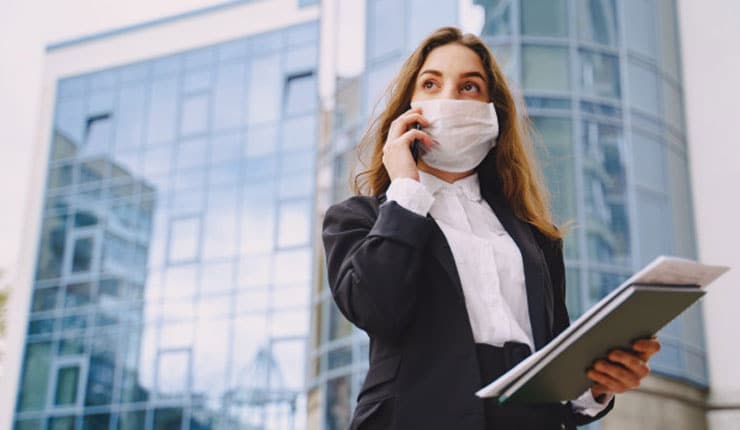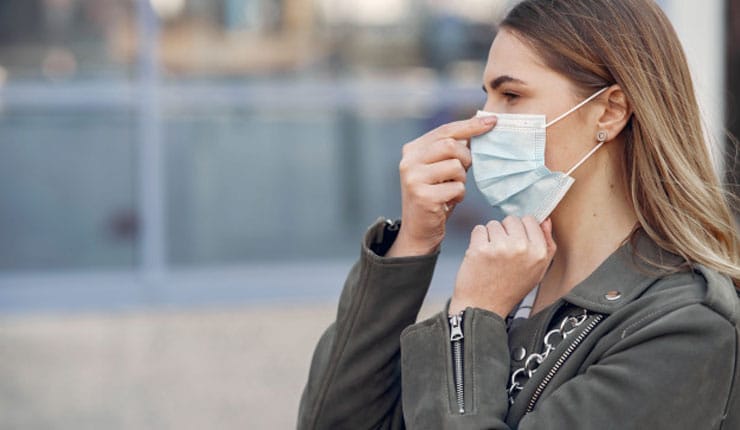CDC (centers for disease control and prevention) repeatedly suggests everyone to wear a face mask to prevent the spread of the virus, SARS-CoV-2, which causes COVID-19.
CDC director said that `covering your face with a cloth is the best weapon we all can use to slow down and stop the transmission of this virus especially when universally used in a community setting. Although these suggestions have been met with many doubtful questions from the public, scientific evidence pursues to show that face-coverings or masks actually work. For every skepticism, experts say that everything is science and the reason is so simple.
Why face masks actually works?

Transmission of the virus is through respiratory drops which are released when individuals talk, speak, or sneeze. If these drops get in someone else’s nose or mouth or inhaled in the lungs, then that individual can contract the virus easily. Masks or face coverings create a physical distance and hinders these drops and prevent them from increasing the number of cases in the surrounding air as compared to as they normally would. These masks are necessary because there are many cases of COVID-19 that don’t show any kind of symptoms or there is delay in symptoms. However, a study shows that these infected people can still spread this virus to people near them. But face masks or face coverings can slow down or help in limiting the disease spread by pre-symptomatic and asymptomatic people.
Growing evidence aids mask effectiveness

An author of JAMA (Journal of American medical associated) said that ‘This time is for the universe to wear a mask. To support his saying he mentioned 2 case studies published on the same day.
First case study says that policy of universe wearing mask in Boston hospital decreased the spread of SARS-CoV-2. Before this policy, number of cases were increasing rapidly among every healthcare worker who contacted the patient directly or indirectly. According to report, after this policy implementation, the number of positive COVID-19 cases drastically declined amongst symptomatic healthcare workers.
Second report in CDC MMWR (morbidity and mortality weekly report) says that by wearing a mask prevented two hairstyles in Missouri from transmission of this virus to their customers. Both hairstylists continued seeing their customers for some days even after their growing symptoms, but they always cover their faces with masks according to local government and their customers as well wore masks. Stylists met around 139 customers before being properly diagnosed and none of them developed symptoms of COVID-19 during follow-ups. Also, their secondary contacts neither developed symptoms. And 76 customers who agreed for a test, none of them tested positive either.
Answering the doubts
Despite all the scientific evidence encouraging about mask-wearing, many people have raised question about their use as well.
Some of the frequently asked questions and myths which are being spread have been answered by experts and given below to clarify your doubts.
1. Masks does not work

According to experts masks are effective and helpful in protecting you and your near and dears from this virus. There are plenty of research done to support the advice of wearing masks. In this scientific world, all medicines which are evidence-based becomes a priority and everyone should trust the scientific community and physicians about what they advise because they all are for our safety only.
2. What about the carbon dioxide building up when I cover my face which might make me sick

There is no scientific evidence or any reason which supports this claim that carbon dioxide build-up is there due to masks. Healthcare professionals like surgeons and physicians have been using more tighter and impenetrable masks for many decades and they are able to breathe and continue doing their work through them. Masks allow oxygen to penetrate in and carbon dioxide to penetrate out.
3. Masks are uncomfortable to wear

This means that you have tried only one type of mask and gave up easily, there are different types and quality of masks and you must choose what suits you. Like if they create humidity, then try cotton material mask that are more breathable as compared to polyester. If they hurt your ears, then try mask with a soft elastic band which won’t hurt or irritate your skin. If they fog up your glasses, then place your eyeglasses on the bridge of nose over the mask which helps you hold the mask in place and won’t mitigate the fog under eyeglasses.
4. What if I’m not at high risk?

Most vulnerable individuals are those who don’t compromise or people with comorbid conditions. Even if you are fit healthy and fine, you might have this dangerous virus that you have no clue about and you might spread this virus to your loved ones as well. Everyone is co-dependent on each one for our health and wellbeing as a community.
Summary
There are a lot of evidence that covering your face with masks actually works in preventing the transmission of COVID-19. Masks work in a scientific way by catching the virus-carrying droplets people emit when they cough, sneeze or speak. The basic principle behind wearing a mask is simple, they are crucial part of carrying this disease. Experts recommend that they work best when everyone wears masks properly and co-operates.
